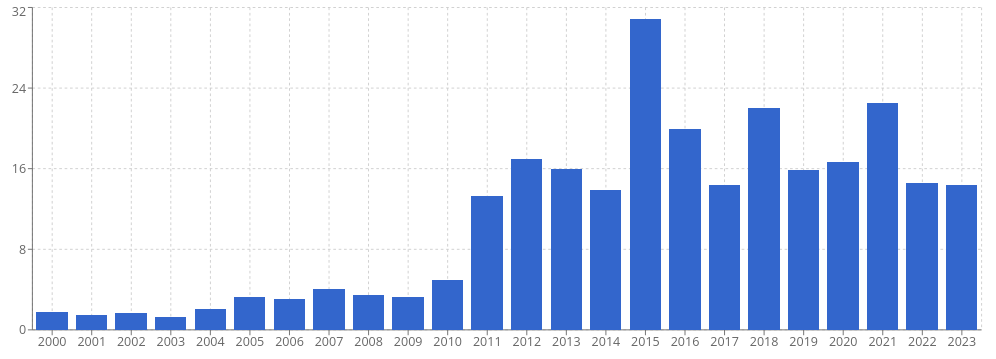Picasso’s ceramic works are gaining price momentum
[21 Nov 2023]Ceramics – a highly expressive medium of creativity that goes back to time immemorial – is increasingly winning over collectors, particularly those of Contemporary art (see our article: Ceramics on the Contemporary art market). However, it’s a Modern artist, Pablo Picasso – the most popular artist on the planet with six 9-digit results to his name for paintings – who is also the top-selling Western creator of ceramics.
Indeed, Picasso’s ceramics have exceeded a million dollars at auction on seven occasions over the last fifteen years, a price level substantially higher than for many of his drawings and even some of his oils-on-canvas. Picasso’s ceramics are therefore highly regarded by collectors of Modern art and they are regularly the focus of specialized sessions organized by the major auction houses. The lifeblood of this type of sale is the extraordinary range of production that the Spanish master left to us; from the highly sculptural (and most-valued) to the more utilitarian (and much more affordable).
Picasso’s ceramics: turnover at auction (copyright Artprice.com)

Online, the prices are rising for all types of lots
The latest sale to focus on Picasso’s ceramic works – Picasso Ceramics – was hosted online by Christie’s from October 30 to November 13, giving collectors and enthusiasts two weeks to bid at their own pace. It concluded with the sale of 89 lots and a total turnover of $3.2 million, with price levels undeniably higher for both modest and more accomplished creations.
Works in the sale fetched prices ranging from around $5,000 to $504,000 for the most expensive ceramic piece (a sculptural vase titled Gros oiseau corrida (A.R. 191) of which there are only 25 copies). At the low end of the price spectrum, the most interesting pieces were small plates representing a Picador ou un Joueur de flûte, manufactured by Madoura in editions of 450 or 500 copies, which used to cost around $3,000 until recently, proof that online sales are indeed a buoyant sales platform for the master’s more affordable works.
In fact, all the lots offered far exceeded the high estimates provided by Christie’s, with the top bid of $504,000 (for Gros oiseau corrida) dwarfing its high estimate of $70,000. The rare bird with winged handles therefore multiplied its high estimate seven-fold, setting a new world record for this subject.
Picasso’s plate, Tête de chèvre de profil (100 copies) sold for $252,000 versus a sale price habitually five times lower.
Other pieces that posted substantial price inflation included his Tête de chèvre de profil (Goat’s head in profile) that was announced at $10,000 – $15,000 but ended up selling for $252,000. True, the initial estimate was particularly attractive compared to prices obtained in the past for this Tête de chèvre… but the final price of $252,000 was substantially higher than any price paid previously for this particular Picasso creation.
Another record in the sale concerned a pitcher, Visage aux points, estimated at $6,000 and which finally sold ten times higher, at $60,480, a price that is all the more impressive as this small object (28 cm tall) is not so rare (from an edition of 350 copies) and its value has fluctuated between $10,000 and $20,000 over the last two years.
Among the buyers of these ceramic works, one often finds collectors who are trying to bring together several pieces in order to compose sets and, ultimately, a collection in themselves. Auction houses place great emphasis on the creative diversity of Picasso as a ceramist and on the opportunity that his ceramics offer to constitute a representative set of more than twenty years of the master’s creation. What is possible with ceramics – developing a partial view of Picasso’s intense career – would be impossible to achieve with works on canvas that are far too expensive. Christie’s and Sotheby’s therefore very regularly feed the appetite of collectors by each hosting two sales a year entirely dedicated to Picasso’s ceramics. Every year, between 1,000 and 1,400 ceramic works change hands at auction, generating, on average, more than $14 million.
Picasso’s ceramic work: a quick reminder…
Picasso produced a wide variety of ceramic works, designing 633 different editions between 1947 and 1971, with many variations and unique pieces emerging from his initial works. He began by creating simple, utilitarian objects such as plates and bowls, but later produced more complex forms, including pitchers and vases, the structure of which is sometimes shaped to form the features of a face or the anatomical parts of an animal.




 0
0
